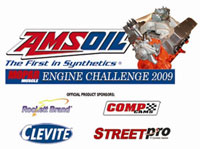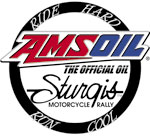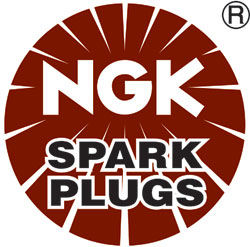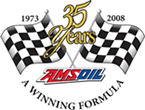Get Rid of Oil Consumption With AMSOIL
How to Stop Burning Oil For Good
We’ve all been here before.
The light turns green and the car in front of you takes off leaving a billowing cloud of blue smoke in its wake.
The scent of burnt oil wafts through your vehicle and you let off the throttle until the source of the problem disappears down the road.
Oil consumption is an interesting phenomenon since so many factors can determine how much oil your vehicle burns and spits out its tailpipe.
It’s easy to assume all oil consumption is bad, but it can be a normal part of engine operation, depending on your vehicle in fact GM defines “acceptable” oil consumption in its 2014 and prior cars and gas-powered light trucks as one quart every 2,000 miles provided the car is used for personal use, is driven in a “non-aggressive” manner, is under warranty and has accumulated fewer than 36,000 miles.
For the most part, Chrysler agrees, although it ups the mileage to 50,000.
So, let’s assume the vehicle ahead of you doesn’t fit these parameters.
What’s going on, and what can be done to help solve the problem?
Mechanical Defects: A host of mechanical variables can contribute to oil consumption but worn out or stuck piston rings are a prime culprit.
The rings are responsible for forming a good seal against the cylinder wall that prevents oil from entering the combustion chamber and burning.
On the down-stroke, the rings scrape excess oil off the cylinder wall into the cranks case.
To form a good seal the ring grooves must be true and m the rings must move freely in their grooves.
Otherwise, oil can enter the combustion chamber and burn.
In some cases, using a higher viscosity motor oil can help fill the widening gap between the rings and cylinder wall, reducing oil consumption.
Let’s assume the driver in front of us is piloting a 2004 Kia Sorento.
He uses 5W-30 conventional motor oil and has accumulated 150,000 miles traveling the upper Midwest selling shower curtain rings.
If we consult his vehicle owner’s manual (or the AMSOIL Product guides at amsoil.com,) we find the vehicle manufacturer recommends several different motor oil viscosities, depending on climate.
Some other vehicle manufacturers – typically foreign – also recommend multiple oil viscosities based on climate.
Most, however, recommend a single viscosity.
Our Sorento driver can try switching to a higher viscosity within the acceptable range – 10W-30, for example – to help seal the rings.
He and others unable or unwilling to switch viscosities can also try a couple other things. AMSOIL Engine and Transmission Flush helps clean piston and ring deposits, promoting formation of a good seal to reduce oil consumption.
For ongoing maintenance, a high-quality fuel additive, such as AMSOIL P.i., helps keep the pistons and rings clean and functioning properly for maximum engine performance.
All that said, even the greatest lubricants and additives in the world won’t fix significant mechanical problems, such as worn main bearings, valve stems or valve guides, that contribute to oil consumption.
Volatile Motor Oil: A motor oil’s volatility also contributes to oil consumption.
”Volatility” defines a lubricant’s evaporative loss.
The more volatile the lubricant, the higher the tendency to evaporate and exit the engine through the crankcase ventilation system.
The more it evaporates, the less oil is left to protect equipment and the faster a user must replace the lost oil.
You may have experienced the phenomenon if you’ve owned a vehicle that “uses” oil.
The small, light molecules in conventional lubricants evaporate at relatively low temperatures.
These light molecules require less energy in the form of heat than heavier molecules to be lifted out of the solution and into the air.
Volatility affects more than the rate of oil consumption.
When light elements in oil evaporate from heat, the oil’s viscosity increases.
This thicker oil forces the engine to work harder resulting in several problems, including the following:
• Performance loss
• Fuel economy loss
• Poor cold-temperature starting
• Increased engine deposits
AMSOIL synthetic motor oils, in contrast, are formulated with high-quality synthetic base oils that offer improved resistance to heat. As a result, they naturally resist oil consumption better than conventional oils.
AMSOIL synthetic lubricants and additives offer the driver ahead of us at the traffic light a couple of options to reduce oil consumption.
He can help maximize his car’s performance and life while making it a little easier to breathe for all of us.
For more information on this topic or any other question you may have feel free to contact me.
If you are interested in becoming an AMSOIL dealer follow the link below to get started.
How to Become an AMSOIL Dealer
Sincerely,
Jesse Hull
Mechanical Engineer
AMSOIL Direct Jobber
913-713-8850 | Privacy Policy









